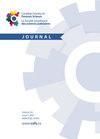Morphological variation in the mandible of white males and females from the East Texas region for potential applications for skeletal identification
IF 0.5
Q4 MEDICINE, LEGAL
Canadian Society of Forensic Science Journal
Pub Date : 2022-04-06
DOI:10.1080/00085030.2022.2043522
引用次数: 1
Abstract
Abstract The mandible is a bone that preserves well in forensic and archaeological contexts and has sound use for sex estimation techniques when the bones of the cranium and pelvis are absent. Past research has frequently used morphological assessments of the mandible, which have long been recognized as a useful means for estimating sex. This study addressed the application and effectiveness of metric and non-metric observations to illustrate the morphological variation of mandibular size and shape to explore sexual dimorphism between males and females. Three non-metric observations and fourteen metric measurements were recorded on mandibles from a skeletal sample of two-hundred and thirty-six individuals from a collection acquired in the region of southeastern Texas. The findings of this study demonstrate that the use of select metric measurements, including bigonial width, bicondylar breadth, minimum and maximum ramus breadth, transverse diameter of the mandibular condyle, maximum ramus height, mandibular length, mandibular total length, and mandibular ramus height, should be considered for sex estimation in the mandible. Two regression models were reported in this study one with eleven measurements at 81.48% accuracy and one with three measurements at 83.33% accuracy. Alternatively, the non-metric analyses exhibited no significant correlation with sex in the study sample, and therefore, non-metric observations of the mandible are not reliable in sex estimation.得克萨斯州东部地区白人男性和女性下颌骨的形态学变化及其在骨骼鉴定中的潜在应用
摘要下颌骨是一种在法医和考古环境中保存良好的骨头,在没有颅骨和骨盆的情况下,它可以很好地用于性别估计技术。过去的研究经常使用下颌骨的形态学评估,长期以来一直被认为是评估性别的有用手段。本研究探讨了度量和非度量观测的应用和有效性,以说明下颌大小和形状的形态学变化,从而探索雄性和雌性之间的两性异形。从德克萨斯州东南部地区采集的236名个体的骨骼样本中,对下颌骨进行了三次非度量观测和十四次度量测量。这项研究的结果表明,在评估下颌骨的性别时,应考虑使用选定的测量方法,包括双髁宽度、双髁宽度,最小和最大支宽度、下颌髁横向直径、最大支高度、下颌长度、下颌总长度和下颌支高度。本研究报告了两个回归模型,一个是11次测量,准确率为81.48%,另一个是3次测量,正确率为83.33%。或者,在研究样本中,非度量分析与性别没有显著相关性,因此,下颌骨的非度量观察在性别估计中不可靠。
本文章由计算机程序翻译,如有差异,请以英文原文为准。
求助全文
约1分钟内获得全文
求助全文

 求助内容:
求助内容: 应助结果提醒方式:
应助结果提醒方式:


